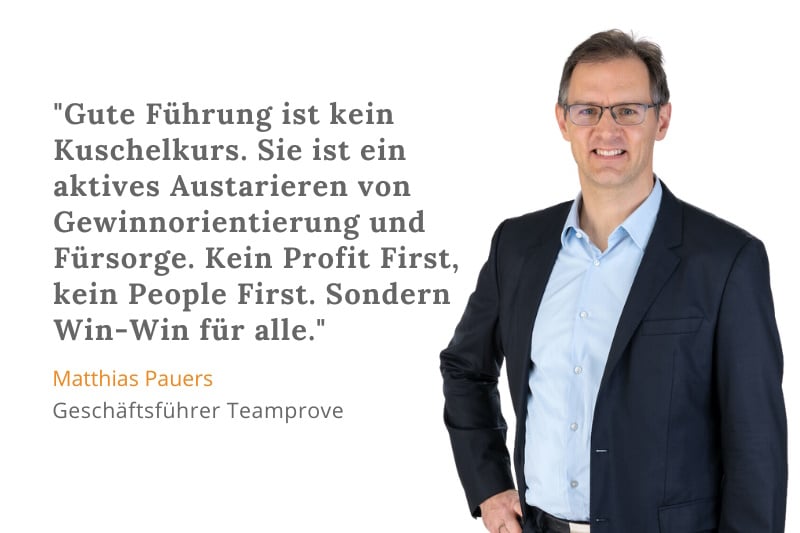In today’s business landscape, many companies and teams use the term „agile“ as synonymous with adaptability, flexibility, and responsiveness. Agile methodologies have gained huge popularity across industries, enabling organizations to deliver value faster and stay ahead of the competition.
However, there is a common misconception that often arises: some companies and managers believe that being „agile“ implies the absence of a solid strategy. In reality, a well-defined strategy remains a critical foundation, even within agile environments.
This short blog post aims to shed light on why a solid strategy is indispensable, regardless of how agile an organization claims to be.
Purpose and Direction
While agility allows organizations to respond quickly to changing circumstances, a solid strategy provides purpose and direction. It acts as a North Star, guiding decision-making, aligning efforts, ensuring that the organization’s activities remain focused on achieving its long-term objectives, outlining the long-term vision, and defining goals and purpose.
Agility allows for quick responses to changing circumstances, yet without a strategic roadmap, this presumed advantage coming from being agile can result in aimless adaptation, leading to inefficiencies and missed opportunities.
A strategy ensures that those responses are aligned with the organization’s overarching goals, vision, mission, and purpose. It enables decision-makers and employees to understand how their individual and team choices and actions contribute to the bigger picture and thus make better, informed choices that support the strategic direction.
Alignment and Coordination
Agility often involves self-organizing teams, iterative development, and decentralized decision-making, all aspects enhance responsiveness and foster empowerment. However, without a solid strategy, this decentralized approach can lead to misalignment and conflicting priorities.
A well-defined strategy provides the necessary alignment and ensures that teams understand and work together to achieve the overall organizational goals, enabling them to make decisions within a broader context and by that also contributing to the organization’s collective success. It provides clarity on the desired outcomes, priorities, and key performance indicators (KPIs).
This alignment enables teams to make decisions autonomously within the strategic framework, fostering collaboration and coordination while, at the same time, it avoids conflicting efforts.
Resource Allocation and Prioritization
Agility thrives on quick decision-making and efficient resource allocation to address crucial situations and customer requests. However, without a solid strategy, these decisions may lack a clear rationale or prioritization framework in terms, just to name one, of prioritizing initiatives and precisely evaluating time, efforts, and costs.
Strategy is a highly effective, yet easy-to-deploy decision-making tool and provides a mechanism to evaluate opportunities, allocate resources effectively, and prioritize initiatives based on their alignment with the organization’s goals, values, and means.
A well-defined strategy prevents ad-hoc decision-making, enables leaders to better analyze data and thus make informed choices, and helps maximize the value and the ROI (Return On Investment) derived from agile practices.
Risk Management:
Agility encourages experimentation and embraces calculated risk and experimentation. However, without a solid strategy, organizations may find themselves exposed to unnecessary risks or pursuing initiatives that do not align with their long-term objectives.
A strategic framework enables organizations to identify, assess, and manage risks effectively and at the same time make better and often wiser decisions, ensuring that agile practices are implemented in a controlled and purposeful manner.
Strategy provides a safety net that prevents agile practices from becoming haphazard and ensures that risks are managed in a way that supports the organization’s strategic direction.
Adaptation and Continuous Improvement
Agile methodologies emphasize feedback, learning, adaptation, and continuous improvement. However, these efforts are most effective when anchored in a solid strategy. A solid strategy plays a vital role in this iterative process, serving itself as a feedback loop, and enabling organizations to evaluate the outcomes of their agile practices against their strategic objectives. This feedback loop facilitates adjustments, refinements, and course corrections, ensuring that the organization remains agile while staying on track to achieve its desired outcomes by comparing the results against the strategic objectives.
The strategy, to be more clear, provides the necessary context and the needed criteria for evaluating success, ensuring that every sort of agile implementation, each adaptation or nuance are purpose-driven and contribute to the overall strategic goals of the organization.
Conclusion
In conclusion, the notion that agility negates the need for a solid strategy is a fallacy. While agility allows organizations to respond rapidly to change, it is the strategic foundation that provides purpose, alignment, and direction.
A solid strategy ensures that agile practices are deployed purposefully, resources are allocated efficiently, risks are managed effectively, and adaptation remains purpose-driven. Organizations that embrace agility must recognize the indispensability of a robust strategy to thrive in the dynamic and competitive business landscape of today and tomorrow.
When a company purely relies on agility, neglecting a proper development of a solid, data-driven strategy, it could experience one or more of the following:
So, organizations must understand that agility alone is not sufficient for sustained success. While agility enables responsiveness and adaptation in the development of products and services, it is the solid strategy that provides purpose, alignment, and direction to these agile practices.
By recognizing the indispensability of a robust strategy, businesses can harness the full potential of agility and drive their organizations towards long-term success.
Here are a few actionable steps to get started:
Remember: Being agile without a solid strategy is akin to navigating rough waters without a compass. Embrace the power of agility within a strategic framework, and propel your organization towards long-term success.





